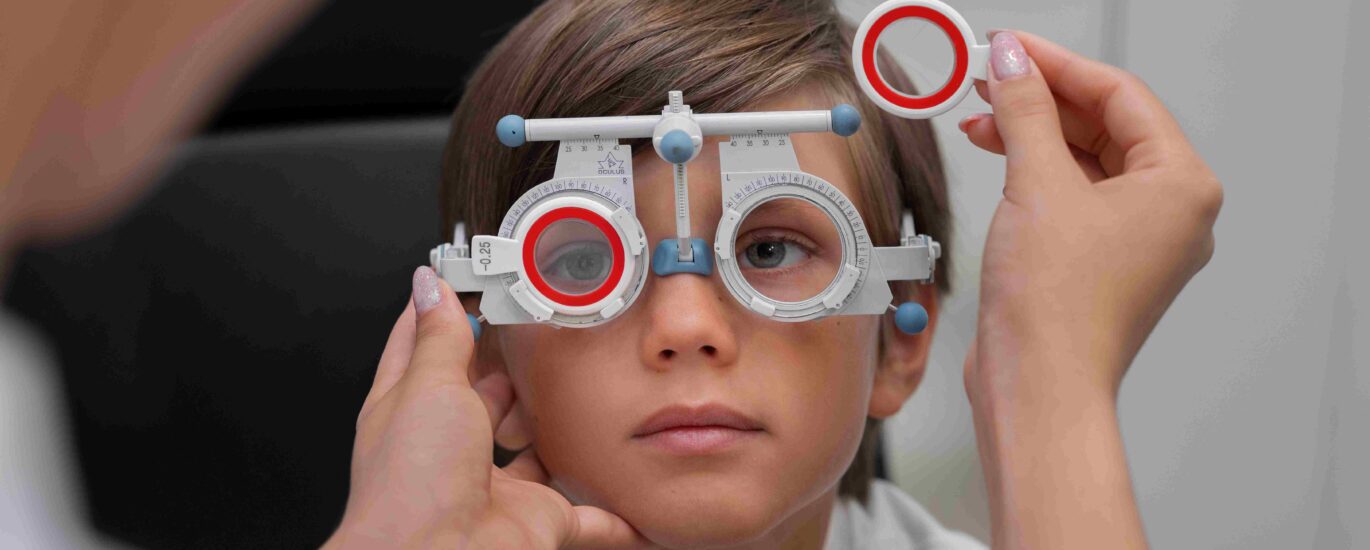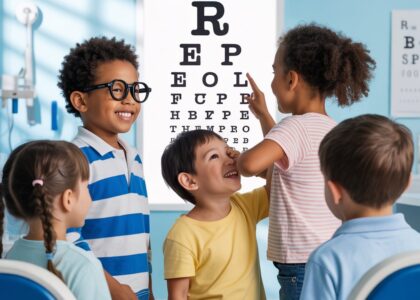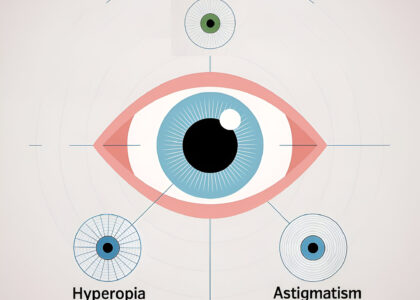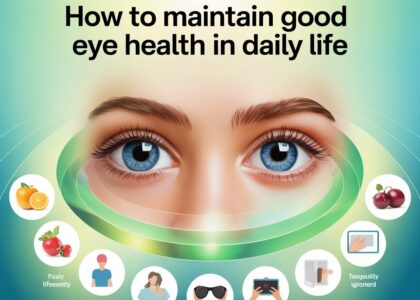Children can experience a variety of eye conditions that, if left untreated, can affect their vision development and overall quality of life. Therefore, early detection and appropriate treatment are crucial for maintaining good eye health. Here’s an overview of some common eye conditions in children and their treatments:
1. Amblyopia (Lazy Eye)
Description: Amblyopia occurs when one eye develops better vision than the other. This can happen if one eye is significantly more nearsighted, farsighted, or astigmatic than the other, or if there is a misalignment of the eyes. Symptoms: Poor depth perception, squinting or shutting one eye, and poor vision in one eye. Treatment:
- Eyeglasses or Contact Lenses: Correcting refractive errors.
- Patching: Covering the stronger eye to force the weaker eye to work harder.
- Atropine Drops: Used in the stronger eye to temporarily blur vision, encouraging use of the weaker eye.
- Surgery: In some cases, if there is an associated strabismus (misaligned eyes).
2. Strabismus (Crossed Eyes)
Description: Strabismus is a condition where the eyes do not align properly. One eye may turn inwards, outwards, upwards, or downwards. Symptoms: Misaligned eyes, double vision, and difficulty focusing on an object. Treatment:
- Eyeglasses: Correcting vision issues.
- Prism Lenses: To reduce the amount of turning the eye has to do to look at objects.
- Vision Therapy: Exercises to improve eye coordination and focusing abilities.
- Surgery: Adjusting the muscles around the eye to correct alignment.
3. Refractive Errors (Nearsightedness, Farsightedness, Astigmatism)
Description: These are common vision problems caused by the shape of the eye preventing light from focusing directly on the retina. Symptoms: Blurry vision, difficulty reading or seeing distant objects, and eye strain. Treatment:
- Eyeglasses or Contact Lenses: To correct the specific refractive error.
- Refractive Surgery: Generally considered in older children or adults.
4. Conjunctivitis (Pink Eye)
Description: An infection or inflammation of the conjunctiva, the clear membrane covering the white part of the eye and the inside of the eyelids. Symptoms: Redness, itching, discharge from the eye, and tearing. Treatment:
- Antibiotic Eyedrops or Ointment: For bacterial conjunctivitis.
- Antihistamines: For allergic conjunctivitis.
- Proper Hygiene: Cleaning the eyes and avoiding touching or rubbing them.
5. Chalazion
Description: A slow-growing, painless lump in the eyelid caused by a blocked oil gland. Symptoms: Swelling, tenderness, and irritation in the eyelid. Treatment:
- Warm Compresses: To help unblock the gland.
- Steroid Injections: To reduce inflammation.
- Surgery: If the chalazion does not respond to other treatments.
6. Blocked Tear Ducts
Description: When the tear ducts, which drain tears from the eyes to the nose, become blocked. Symptoms: Tearing, recurrent eye infections, and swelling in the inner corner of the eye. Treatment:
- Massage: Gentle massage of the tear duct to open the blockage.
- Probing: A procedure to open the duct if massage is ineffective.
- Surgery: In more severe or persistent cases.
7. Retinopathy of Prematurity (ROP)
Description: An eye disorder that occurs in premature infants, leading to abnormal blood vessel growth in the retina. Symptoms: Often diagnosed through an eye exam, as infants may not show symptoms. Treatment:
- Laser Therapy: To stop the growth of abnormal blood vessels.
- Cryotherapy: Using cold to treat the retina.
- Vitrectomy or Scleral Buckling: In severe cases to reattach a detached retina.
Preventive Measures and Tips for Parents
- Regular Eye Exams: Ensure children have regular comprehensive eye exams to detect any issues early.
- Protective Eyewear: Use protective eyewear during sports and activities.
- Healthy Diet: Encourage a diet rich in fruits, vegetables, and omega-3 fatty acids.
- Monitor Screen Time: Limit screen time and ensure proper lighting to prevent eye strain.
Conclusion
Early detection and treatment of eye conditions in children are vital for preventing long-term vision problems. Regular eye check-ups and being vigilant about any changes in your child’s vision can ensure they receive the appropriate care and treatment.








2 thoughts on “Common Eye Conditions in Children and Their Treatments”